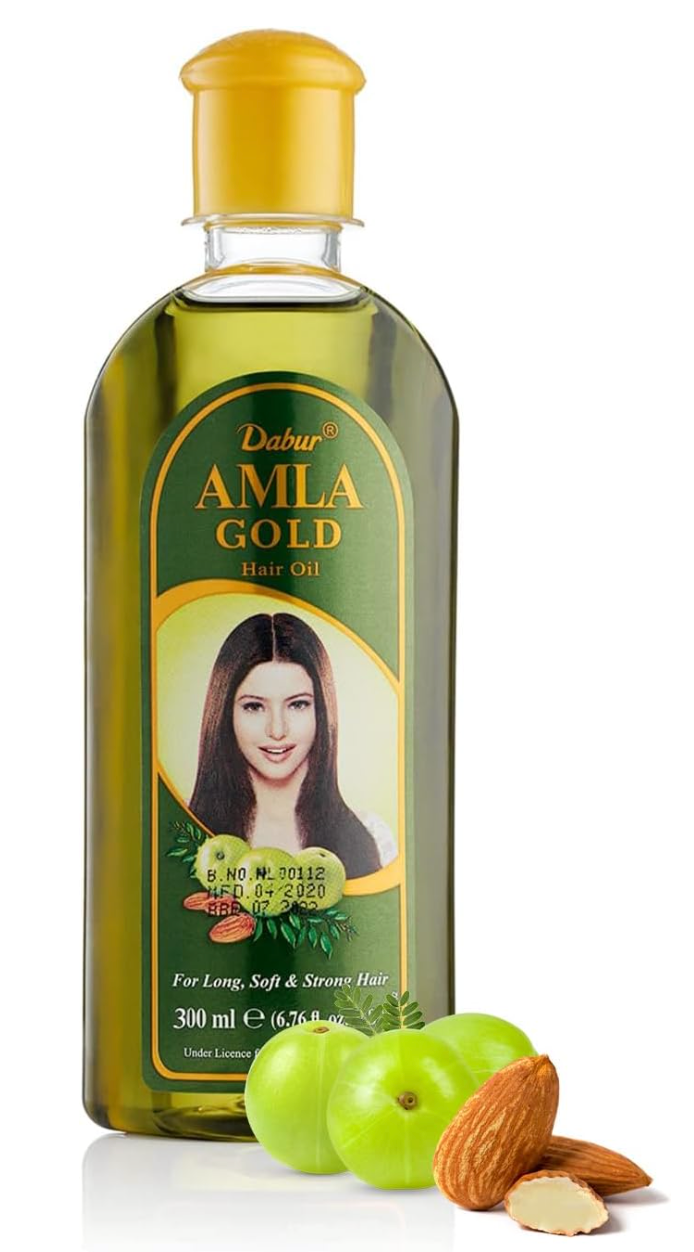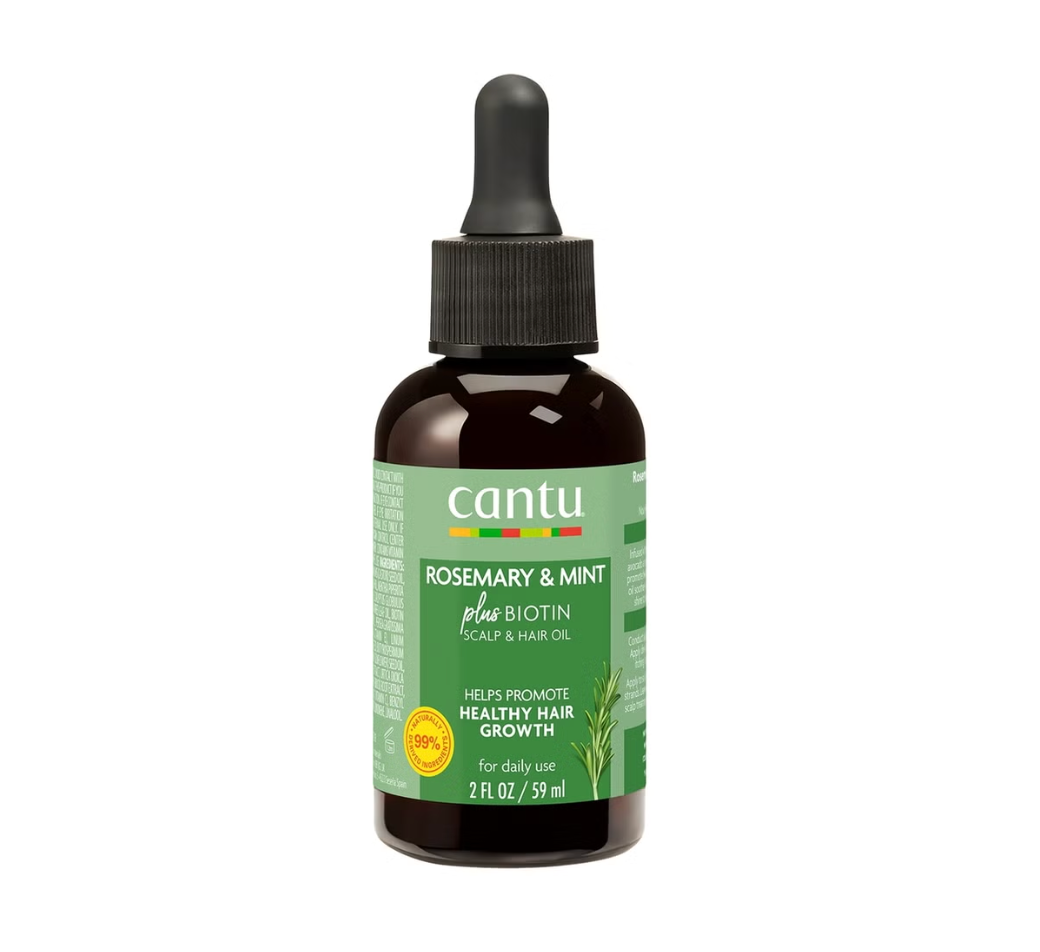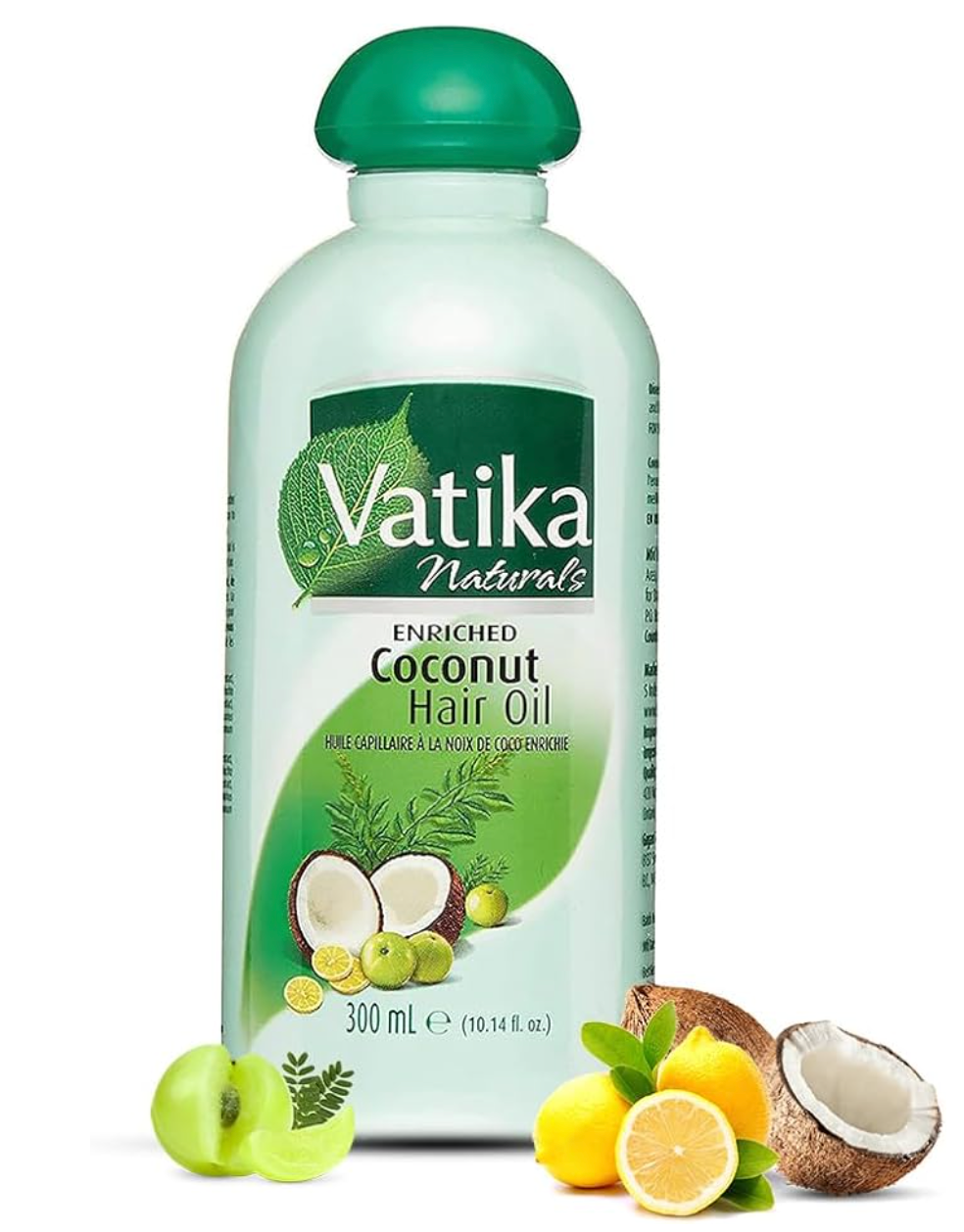Hair Oiling Has Gone Mainstream — But It’s Much More Than A Trend
All linked products are independently selected by our editors. If you purchase any of these products, we may earn a commission.
Photographed by Ramona Jingru Wang.
Hair care is a huge part of South Asian beauty culture. Many South Asian women aspire to have long, silky and thick lengths, with the pursuit of healthy hair embedded into our beauty routines from day one.
And I mean literally. As newborns, our heads are shaved in a tradition which is said to ensure thicker hair growth in adult life. But arguably the most crucial rule in South Asian hair maintenance is regular hair oiling.
Thel (or hair oil) was my first beauty product. Unlike others, I didn't gravitate towards black kohl eyeliner (though I did borrow or, rather, steal it from my older sister later down the line). My initial foray into beauty was the coconut oil that my mum massaged into my scalp on a weekly basis for as long as I can remember.
AdvertisementADVERTISEMENT
What is hair oil?
Hair oiling is anon-negotiable routine for many South Asian girls. The deep massage is said to stimulate hair growth, keeping it thick and sleek. Whichever brand happens to be the household favourite — KTC coconut oil, Vatika, Dabur Amla, even castor oil or rosemary oil — hair oiling is a tradition that has been passed down through generations.
“
Why is it that when I practise hair oiling, it's gross — yet if a white woman on TikTok does it, they're considered an influencer and it becomes a global trend with millions of views?
”
For me it was a painful experience in more ways than one. Physically, because I never brushed my knots out and left the mammoth task to my exasperated mum. Then the process itself was rarely a relaxing scalp message. It was aggressive, actually, and I remember my mum often scolding me for whining about it. Some people's childhood memories include learning to ride a bike or wearing an embarrassing flower girl dress at a family member's wedding; one of my most vivid memories is of my Indian mother screaming: "Varsha, thel leeyav!" ("Varsha, bring the oil!").
You can imagine my surprise, then, when I heard that hair oiling was trending on Google and TikTok. Alongside popular hacks like washing hair with cold water and heatless curls (big fan), the #hairoiling hashtag has 170.2 million posts and counting. When did hair oiling go mainstream?
Head to social media and you'll spot countless women and girls flooding their scalps and lengths with rosemary oil (rumoured to aid hair growth and prevent thinning), plus all manner of luxury hair products, from OUAI to Fable & Mane. My initial response was positive: perhaps the trend will help South Asian girls to feel less othered and find it easier to embrace this part of their culture. As much as I look back on my hair oiling experiences and appreciate the tenderness of the moments, and what they must've meant for my mum, I was embarrassed by them at the time.
AdvertisementADVERTISEMENT
"Ja ja — don't be silly," my mum would scold me in Gujarati when I insisted I wasn't leaving the house with my hair drenched in oil. At school I was overly conscious of being labelled the 'freshie' — a go-to insult for mocking brown kids when any part of their non-British culture was visible. Why is it that when I practise hair oiling, it's questionable or gross — yet if a white woman on TikTok does it, they're considered an influencer and it becomes a global trend with millions of views?
How do hair oiling trends affect South Asian women?
"And to think I used to be scared of hair oil 🤦♀️," posted TikToker @kayli.boyle, showcasing the positive effects of castor oil on her hair in a since-deleted video with over 1.6 million views. Hm. Using oil on your hair and scalp has also been rebranded as 'hair slugging' on the app, where the phrase has 25.8 million posts. In response to an influencer's 'hair slugging' video, which shows her saturating her hair in oil to make it soft and shiny, some users are responding with scepticism. "South Asian people have been doing this since forever and now y'all calling it hair slugging?" says one. "So tired of POC cultural practices being coined by white ppl and treated like rare discoveries 🤦🏻♀️" says another.
When my favourite fashion blogger Negin Mirsalehi launched Gisou Honey Infused Hair Oil, £19, I remember thinking: Is this 'in' now? My white friends would often raise their eyebrows when I told them that my haircare routine consisted of nothing but heat spray and coconut oil. It seems I'm not alone in feeling embarrassed by hair oiling in the past. Amina* told me: "I used to hate it so much that it was the biggest source of childhood conflict between me and Mum." Amina confessed that she'd tell classmates the product in her hair was gel instead.
AdvertisementADVERTISEMENT
“
I won't buy the latest hair serum or frizz-fighting product. Not when my trusty jar of coconut oil can condition my hair far better than anything at Boots.
”
Other women I spoke to, like Devika, think the viral nature of hair oiling will be great for South Asian teens, who may feel less alone as a result. But others asked why it's only cool when white people gentrify it. "If you buy the stupid expensive 'virgin coconut oil' from brands like Coco & Eve, that's a nice treatment," said Mignonne, adding that it isn't deemed as luxe if you use a cooking oil, for instance. Priyanka has experienced similar ignorance. "When my white friends would ask what I'd do to help with my hair, I would tell them that I put Amla oil or coconut oil in it. Now people say that they saw it on TikTok."
Priyanka says that reducing these quirks and traditions to trends could dilute their meaning. Hair oiling may be a fleeting trend on TikTok but it's deeper than that for South Asians. "Yes, it hurts," Priyanka told me, "but you can feel the love run through your entire body and soul. Now, I have to beg my mum to oil my hair. I crave having moments like that again." Jigna* told me that while hair oiling was huge in her household growing up, it became crucial when she lost her hair during chemotherapy. Mignonne revealed that when she started losing her hair at 20 due to health problems, she asked her mum to oil her hair again. Over time, she noticed it becoming thicker and stronger.
@seeratsaini_ THAT’S WHY HER HAIR IS SO BIG! 👀 if you’re on a budget—this lasts 3 months and you only need a tiny bit for each head massage 😘 #hairgrowth #ayurveda ♬ How Deep Is Your Love - Kiris Houston
Despite my initial complicated feelings towards hair oil, the method maintains a leading role on Sundays, when I practise self-care. Second-generation South Asians in particular have given hair oiling a new look, treating it almost like a hair mask. I won't buy the latest hair serum or frizz-fighting product. Not when my trusty jar of coconut oil can condition my hair far better than anything at Boots. And when colleagues ask how my hair is so thick, I never shy away from sharing the tradition of hair oiling.
AdvertisementADVERTISEMENT
My mum mixes castor and coconut oil into one little pot for me. The trick is to rub some of the oil onto your fingers and then to really massage the scalp with both hands. In circular motions, I focus on the very middle spot of my scalp, often flipping my head over to avoid the dreaded arm ache. Then I drench the ends of my hair and pull it into a plait or a bun. I leave the oil in overnight or sometimes, when I have a lack of social plans, I try to stretch it over two days. Post-hair wash, I like to enlist a little bit of the oil mixture after I've dried or styled my hair, working it through the ends to impart shine.
I love seeing South Asian women embracing hair oil and educating others about it online. An inspiration to younger South Asians, TikToker @seeratsaini_ shares homemade oil recipes and hair growth tips, while @sheeksonfleek went viral for showing her followers how to get shiny, soft hair by hair oiling (she uses her mum's coconut oil with Indian herbs in it).
Similarly, in a viral video, @manisha.nawal said that growing up, she hated when her mum forced her to do hair oiling treatments. "But here I am today showing you how I oil my own hair," she said in a tutorial with thousands of views. "I start by combing my hair thoroughly and then going in with bhringraj hair oil," she said. "Then I mix in almond hair oil and [a scalp treatment]." Manisha explained that massaging is the most important part of the process as it increases blood flow and makes oils penetrate deeper. "I leave this in as an overnight treatment and wash it out the next day."
AdvertisementADVERTISEMENT
For me and others, hair oil is so much more than a passing trend on social media. It's love, family, tradition and culture. In some cases, like Mignonne's and Jigna's, it's a saviour. Plenty of white women may forget about coconut oil when the #hairslugging or #hairoiling hashtags slowly die down but I — and millions of other South Asian women — will continue this multigenerational love story.
*Name has been changed
Best hair oils to shop now
AdvertisementADVERTISEMENT









